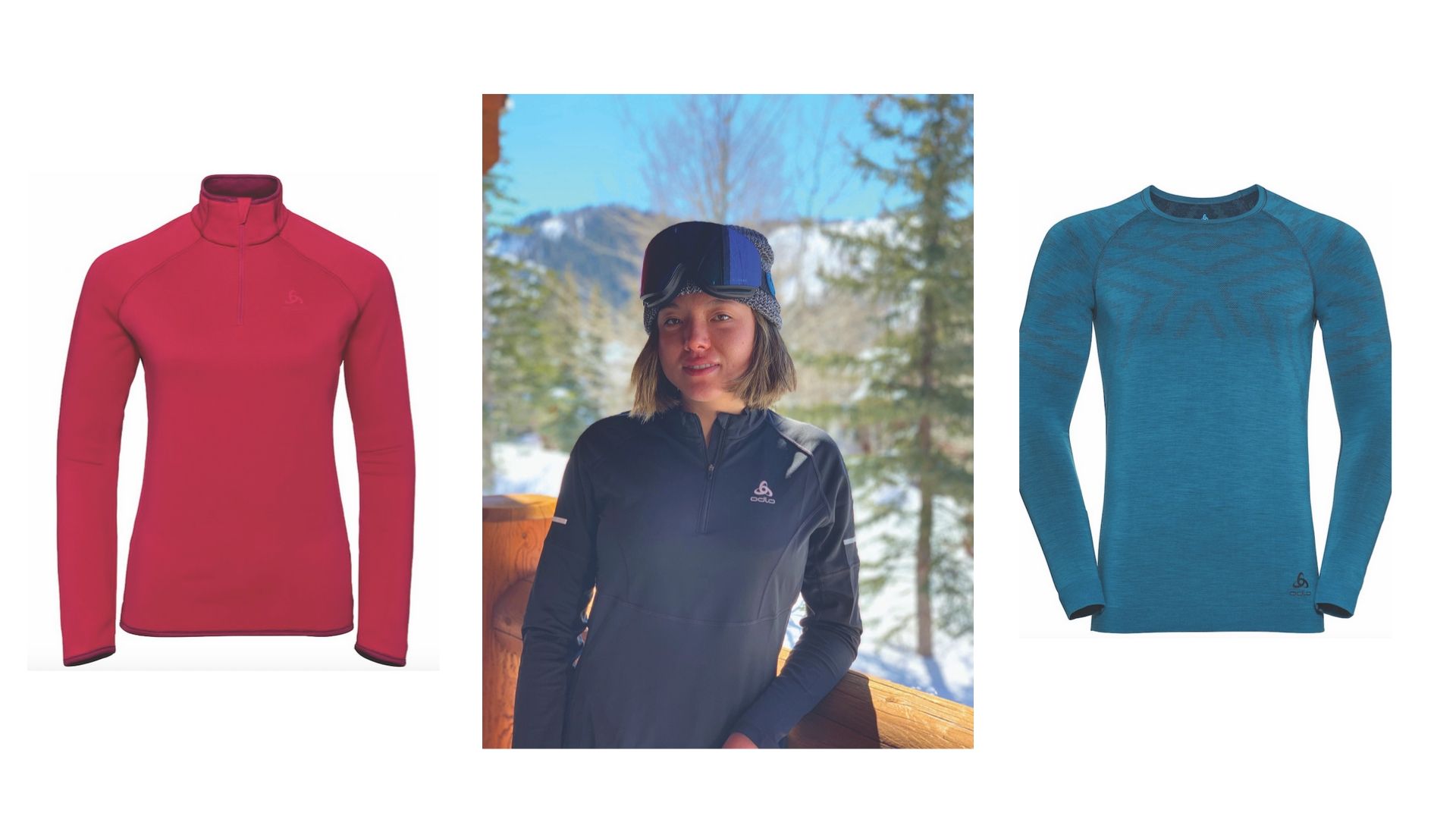Expert layering tips from pro skier Izzy Atkin


How you layer up for skiing is a matter of personal preference in terms of materials, weights and styles. The rule of thumb is that as long as you pick efficient and compatible garments, you should only need three layers – a baselayer, a midlayer and an outer layer (jacket or shell) – no matter what the weather throws at you.
The biggest mistake active people make – in lots of sports – is to put on too many layers and find they are soaked in sweat as soon as they put in some effort.
So, what technologies and choices are available today to skiers of varying tastes and levels of performance, to ensure they strike the right balance out on the hill between weather protection, temperature control and moisture management?
First up, there’s a choice between synthetic and natural fibres, or a blend of both.
Midlayers are about temperature control as well as wicking sweat away from the baselayer so it can evaporate. Different materials and constructions vary in bulkiness and durability.
For instance G-Loft, a synthetic in Odlo’s ranges, combines great moisture management and high compressibility with excellent heat retention, whereas Ceramiwarm, whose yarn contains heat-reflecting ceramic particles, provides up to 3C extra heat and is super-light.
Other brands have their own formulas for synthetics – Helly Hansen’s Lifaloft or Patagonia’s Plumafill for instance.
And while down and merino remain the most-used natural insulation across the brands, one innovation this winter is the introduction of yak wool to Odlo midlayers and jackets. This hollow-fibred wool has evolved to be 40% warmer than merino, 66% more breathable and dries 17% faster – no wonder, as yaks live in the Himalayas at 5000m altitude, happily existing in temperatures down to minus-40C.
So what will I be wearing out on the hill this winter? Well, I feel the cold a little (though I move around too much to wear yak during training, even in the US).
My go-to baselayer is the Blackcomb, my midlayer will be the S-Thermic and I won’t be without my trusty Muscle Force socks, which are a synthetic/wool blend.
But what I’m most excited about is the new I-Thermic mid, which has heating cables knitted in, controlled via an app (yes, really!).